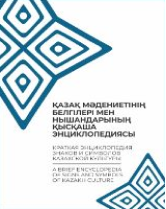
The art of stone carving
The first item – qulyptas is a rectangular stele with a top in the form of various geometric shapes, usually rounded. This piece belongs to the small forms of tombstones, the main field of which was decorated with relief carvings.
The next piece is called qoshqar tas, which is a small form in the form of a stylised image of a male ram. Usually the craftsmen carefully worked out the head and horns of the animal.
Another product, called qoi tas, is a structure in the form of horizontal carved or smooth stone blocks, similar to a step pyramid. The surface of the dome mausoleum was carved in the most striking and voluminous manner, and its interior was decorated with paintings.
The true flowering of the Kazakh stone-carving art began in the middle of the 19th century and reached its peak by the beginning of the 20th century. A known expert on the monumental architecture of western Kazakhstan S. E. Azhigali noted that among the formative elements of décor there is an approximately equal use of all four groups of Kazakh ornaments, which form inter-transitional compositions. The most common are the tüye taban motif, the bitpes motif, the uly ana motif and others.
Of course, the ornamental compositions of such monuments express the ideas of immortality and cyclical life and other traditional perceptions of the universe.
Unfortunately, this type of traditional Kazakh craftsmanship has been lost.



